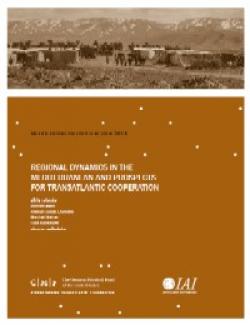Regional Dynamics in the Mediterranean and Prospects for Transatlantic Cooperation
Two major trends can be identified that characterize the Southern and Eastern Mediterranean countries in the wake of the Arab uprisings. The first is their increased fragmentation and the appearance of seemingly centrifugal trajectories across the region with countries at different stages of the transition process. The second hallmark of the region today has to do with the pivotal position occupied by new political actors, namely the various Islamist parties that have emerged by and large as the most victorious political forces in the region after the first free and fair elections ever to be held in many countries in the region. This report attempts to illustrate and study the new regional dynamics (or lack thereof) in the Mediterranean through four papers written by European and Southern Mediterranean experts. They tackle regional dynamics in the Mediterranean in the areas of trade and investment patterns; movement of people; energy cooperation; and civil society, culture, and means of communications. The goal of the report is to go beyond describing the current trends that underscore the existence of regional dynamics (or lack thereof) to assess the impact of domestic, regional, and global changes on them and to put forward policy recommendations for the transatlantic partners.
Paper produced within the framework of the IAI-GMF strategic partnership.
-
Details
Washington, German Marshall Fund of the United States, 2013, vii, 52 p. -
Issue
22
Foreword, by Silvia Colombo
1. Trade and Investment Dynamics in the Mediterranean Region: No Real Change after the Arab Spring, by Ahmed Farouk Ghoneim
2. The Arab Spring and Population Movements in the Mediterranean Region, by Ibrahim Awad
3. A New Transatlantic Approach to Mediterranean Energy Cooperation: Joint Efforts and New Synergies after the Arab Spring, by Manfred Hafner and Simone Tagliapietra
4. New Regional Dynamics and Means of Communication in the Mediterranean Region, by Leila Nachawati
Related content
-
Ricerca27/12/2013
Cooperation in the Mediterranean and the Middle East
leggi tutto



